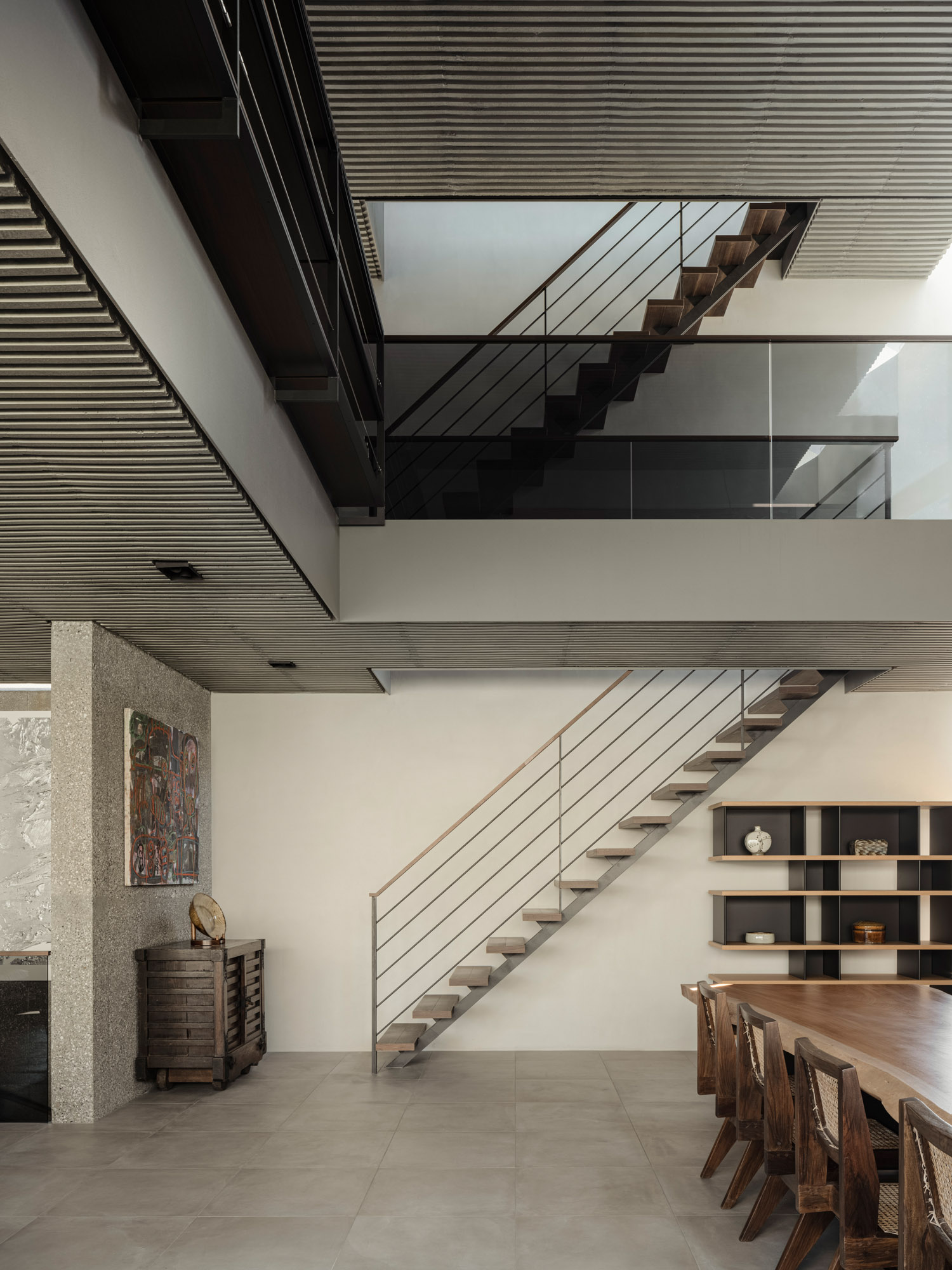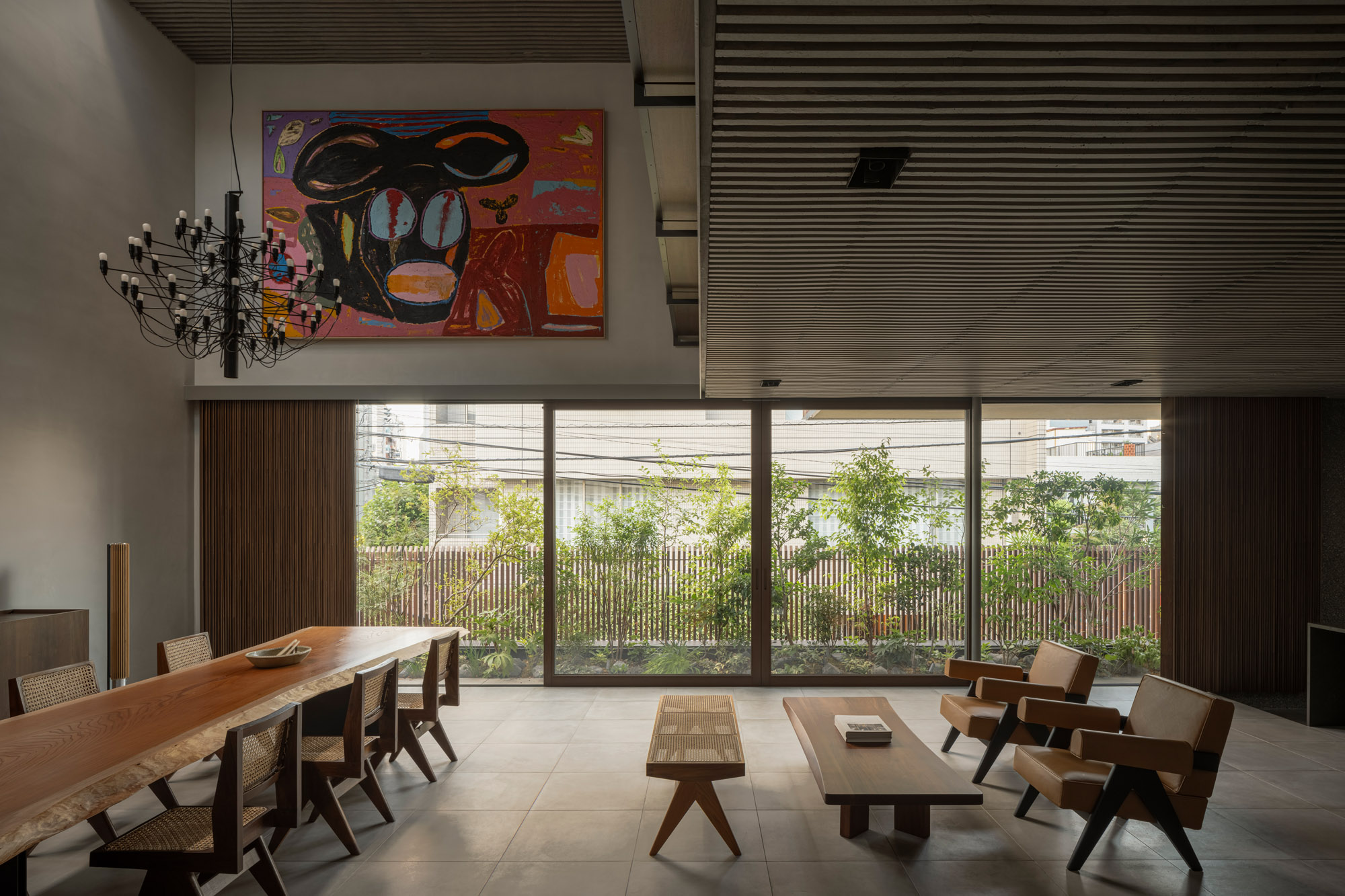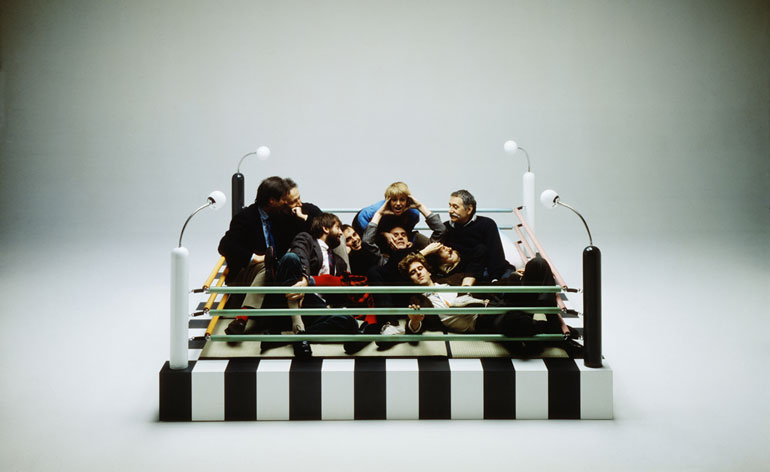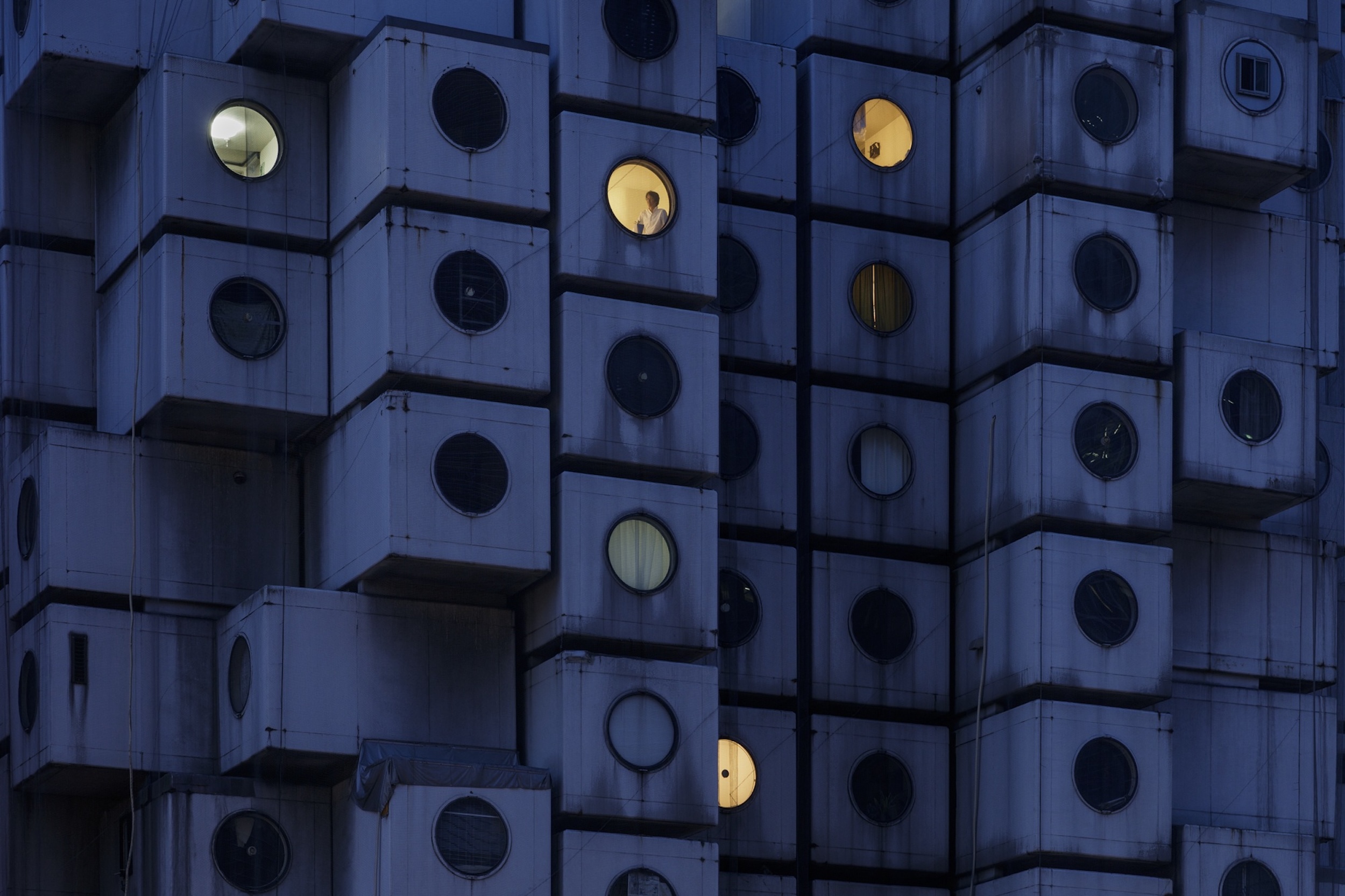An Aoyama House exemplifies a synergetic architect and client relationship
A client’s faith in his architect pays dividends in Aoyama House; a light-filled, effortlessly elegant Tokyo home

The trust a client puts in an architect is directly reflected on the finished building. Try to take control of every tiny little detail and you will probably end up with a lot of good intentions, but a mixed bag of half-baked ideas. Give the architect the freedom to experiment around a good brief and your chances of ending up with something unique, pushing the boundaries of what architecture can do, are much higher.
Keiji Ashizawa’s latest residential project in Aoyama is a good example of a long and trusting relationship between a Tokyo real estate family and one of the city’s most sought-after architects. ‘I started working with the father of the family a number of years ago,’ says Ashizawa. ‘After a couple of smaller restaurants, I was asked to design a dentist’s office for the younger brother, and this led to a commission for this house for the older brother and his family.’

A series of high windows allow morning light to create beautiful patterns on the wall of the double-height living area, which is illuminated at night by a large Gino Sarfatti chandelier
A refined Aoyama House by Keiji Ashizawa
Having known his clients for a long time, Ashizawa had a clear idea of what they liked, and from their side, the clients knew they were in safe hands with Ashizawa. ‘We, of course, discussed what was needed in terms of floor plan and some basic design ideas, but other than that, we had a lot of creative freedom,’ says the architect.
The house sits on a 150 sq m corner plot in Aoyama, one of the most fashionable neighbourhoods in Tokyo. With its pale yellow stucco finish and private balconies, the house looks relatively plain from the outside, but step inside, and it delights with its choice of materials and eclectic selection of modern art and furniture.

Dark walnut cabinetry adds warmth to the open-plan kitchen
What instantly draws the eye is the unique araidashi poured concrete walls. ‘This was a first for us. We were a bit worried about how it would turn out and what the response of the client would be,’ Ashizawa admits. Araidashi is a traditional Japanese technique typically used on mortared floors or walls. Small stones are mixed in with the cement and, before the mortar sets, a stiff brush is used to reveal parts of these stones. For this to work on concrete, the builders used a pressure cleaner to wash away parts of the outer layer right after the formwork was removed. The result is an unapologetic, raw terrazzo-like surface that adds interest to what could easily have been a bland concrete finish. Combined with plastered walls, the louvred concrete ceiling and the grey floor tiles, it’s a textural approach that really makes the interior stand out.
Most of the wooden fixtures are made of dark walnut, which adds warmth to an otherwise cooler colour palette. Details, such as the carefully-designed recessed door handles, bespoke lighting, and the elegant metal and walnut spiral staircase, further add to the overall experience of the space.

Aboudia’s 'Dream of a Car' sits above an antique Japanese chest of drawers on wheels in the living room
Ashizawa also paid particular attention to bringing in natural light. In the spacious basement that functions as a lounge/office, a series of fixed windows, placed at ground level below the louvred façade, let in soft, indirect light via an opening hidden behind a beam. In the morning, a series of skylights create beautiful patterns on the north-western wall of the double-height, first-floor living area. Both the main bedroom and the living area have large, north-facing windows and, combined with planted terraces out front, this manages to conjure up a feeling of space, wide views and greenery, despite the home being in the middle of the city.
Receive our daily digest of inspiration, escapism and design stories from around the world direct to your inbox.
The client’s art and furniture collection elevates the interior further. A large, backlit painting by Julian Opie greets visitors in the hallway, while a work by Todd James adds a touch of colour to the kitchen.

Views of greenery and the sky make this house feel serene
Meanwhile, a collection of vintage Pierre Jeanneret dining chairs make a perfect match for the impressive dining table, made from a single, solid slab of keyaki, a Japanese hardwood. ‘We had actually used this very piece of wood at a store that ended up closing, but it was just too beautiful a piece to let go, so we decided to repurpose it into a dining table,’ says Ashizawa.
Ashizawa is already working on a further two commissions for the same family – one is another home in central Tokyo, the other is a retreat in the suburbs. Trust, it seems, is as important in architecture as in any other walk of life.
A version of this article appears in the April 2024 issue of Wallpaper*, available in print, on the Wallpaper* app on Apple iOS, and to subscribers of Apple News +. Subscribe to Wallpaper* today
Originally from Denmark, Jens H. Jensen has been calling Japan his home for almost two decades. Since 2014 he has worked with Wallpaper* as the Japan Editor. His main interests are architecture, crafts and design. Besides writing and editing, he consults numerous business in Japan and beyond and designs and build retail, residential and moving (read: vans) interiors.
-
 The new Tudor Ranger watches master perfectly executed simplicity
The new Tudor Ranger watches master perfectly executed simplicityThe Tudor Ranger watches look back to the 1960s for a clean and legible design
-
 This late-night hangout brings back 1970s glam to LA’s Sunset Boulevard
This late-night hangout brings back 1970s glam to LA’s Sunset BoulevardGalerie On Sunset is primed for strong drinks, shared plates, live music, and long nights
-
 How Memphis developed from an informal gathering of restless creatives into one of design's most influential movements
How Memphis developed from an informal gathering of restless creatives into one of design's most influential movementsEverything you want to know about Memphis Design, from its history to its leading figures to the pieces to know (and buy)
-
 This Fukasawa house is a contemporary take on the traditional wooden architecture of Japan
This Fukasawa house is a contemporary take on the traditional wooden architecture of JapanDesigned by MIDW, a house nestled in the south-west Tokyo district features contrasting spaces united by the calming rhythm of structural timber beams
-
 Take a tour of the 'architectural kingdom' of Japan
Take a tour of the 'architectural kingdom' of JapanJapan's Seto Inland Sea offers some of the finest architecture in the country – we tour its rich selection of contemporary buildings by some of the industry's biggest names
-
 Matsuya Ginza lounge is a glossy haven at Tokyo’s century-old department store
Matsuya Ginza lounge is a glossy haven at Tokyo’s century-old department storeA new VIP lounge inside Tokyo’s Matsuya Ginza department store, designed by I-IN, balances modernity and elegance
-
 The Architecture Edit: Wallpaper’s houses of the month
The Architecture Edit: Wallpaper’s houses of the monthThis September, Wallpaper highlighted a striking mix of architecture – from iconic modernist homes newly up for sale to the dramatic transformation of a crumbling Scottish cottage. These are the projects that caught our eye
-
 Utopian, modular, futuristic: was Japanese Metabolism architecture's raddest movement?
Utopian, modular, futuristic: was Japanese Metabolism architecture's raddest movement?We take a deep dive into Japanese Metabolism, the pioneering and relatively short-lived 20th-century architecture movement with a worldwide impact; explore our ultimate guide
-
 A new Tadao Ando monograph unveils the creative process guiding the architect's practice
A new Tadao Ando monograph unveils the creative process guiding the architect's practiceNew monograph ‘Tadao Ando. Sketches, Drawings, and Architecture’ by Taschen charts decades of creative work by the Japanese modernist master
-
 A Tokyo home’s mysterious, brutalist façade hides a secret urban retreat
A Tokyo home’s mysterious, brutalist façade hides a secret urban retreatDesigned by Apollo Architects, Tokyo home Stealth House evokes the feeling of a secluded resort, packaged up neatly into a private residence
-
 Landscape architect Taichi Saito: ‘I hope to create gentle landscapes that allow people’s hearts to feel at ease’
Landscape architect Taichi Saito: ‘I hope to create gentle landscapes that allow people’s hearts to feel at ease’We meet Taichi Saito and his 'gentle' landscapes, as the Japanese designer discusses his desire for a 'deep and meaningful' connection between humans and the natural world